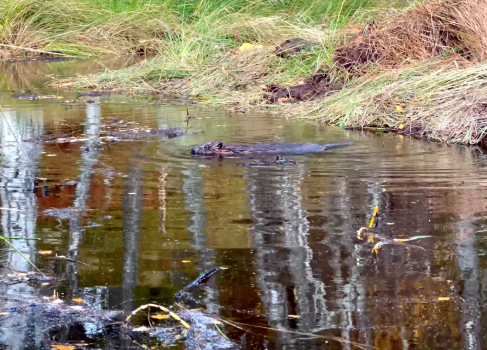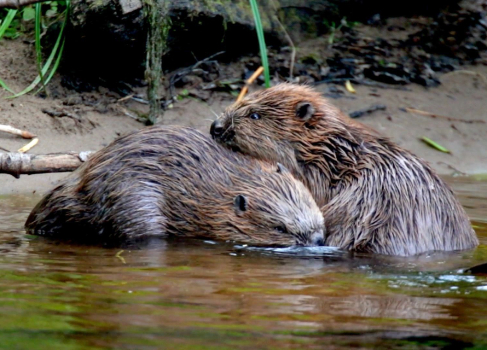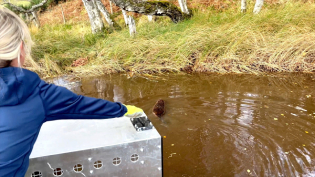Scottish Water Paves the Way for Future Investment with Successful Beaver Relocation
19 November 2024“We know that the beavers are vital to the health of wetlands, but their activity sometimes brings them into conflict with landowners and infrastructure.
Roisin Campbell-Palmer
Our capture and release initiative enables us to address these situations humanely, ensuring the protection of structures while also preserving beaver populations.
”
Beavers Trust
Scottish Water have worked in partnership with The Cairngorms National Park Authority and Beaver Trust to successfully relocate a family of beavers from the grounds of Glenfarg Water Treatment Works (WTW). The relocation of the beavers is in preparation of a multi-million-pound upgrade to the site, which supplies drinking water to around 179,000 customers across Kinross-shire and Fife.
The beavers, known for their ability to transform their environments, had set up home in the glen at the side of the Treatment Works. The operations team at the works had grown familiar with their presence, often spotting the dome-shaped lodges they constructed from branches and mud, complete with hidden underwater entrances. The beavers also built dams in the stream using sticks and reeds, subtly reshaping the landscape around them to make it a home.
Scottish Water consulted with wildlife experts at Beavers Trust to ensure the safety and well-being of the beavers during the relocation. The beavers were captured using specially designed traps baited with food. Once captured, the animals were carefully transported to Five Sisters Zoo, where they were held in dedicated facilities until they could undergo health screening to ensure they were fit and ready for release. From there, they were transported to a carefully chosen new home, where they could continue thriving in an environment suited to their natural way of life.

Exploring the watercourses at Cairngorms National Park

Two young beavers playing after being released to their new home
“We recognise the challenges of undertaking major construction in a rural environment, and the successful relocation of the beavers to Cairngorms National Park is a testament to our commitment to delivering this project.
Martin McIlvaney
We extend our heartfelt thanks to the Beavers Trust and the Cairngorms National Park Authority for their invaluable support and guidance.
”
Senior Project Manager, Scottish Water
“We know that the beavers are vital to the health of wetlands, but their activity sometimes brings them into conflict with landowners and infrastructure.
“Our capture and release initiative enables us to address these situations humanely, ensuring the protection of structures while also preserving beaver populations.
“Relocating beavers to habitats where they can thrive without causing damage is a win-win for both wildlife and the community.”
The Cairngorms National Park has been chosen as the Park Authority are in the process of establishing a wild population of beavers in the Spey Catchment in line with the parks Partnership Plan. Over 30% of the National Park watercourses are highly suitable for beavers and 20% are suitable for beaver dams. The most appropriate habitat for beavers is the network of lochans and wetland environments largely in the complex of wetlands and lochans in the upper Spey catchment.
Martin McIlvaney, Scottish Water's Senior Project Manager said;
“We recognise the challenges of undertaking major construction in a rural environment, and the successful relocation of the beavers to Cairngorms National Park is a testament to our commitment to delivering this project.
“We extend our heartfelt thanks to the Beavers Trust and the Cairngorms National Park Authority for their invaluable support and guidance.”
“This achievement enables us to move forward with the upgrades at Glenfarg Water Treatment Works, knowing that the beavers are flourishing in their new habitat.”









